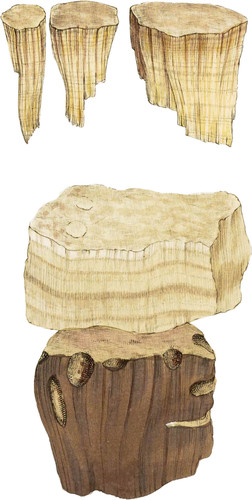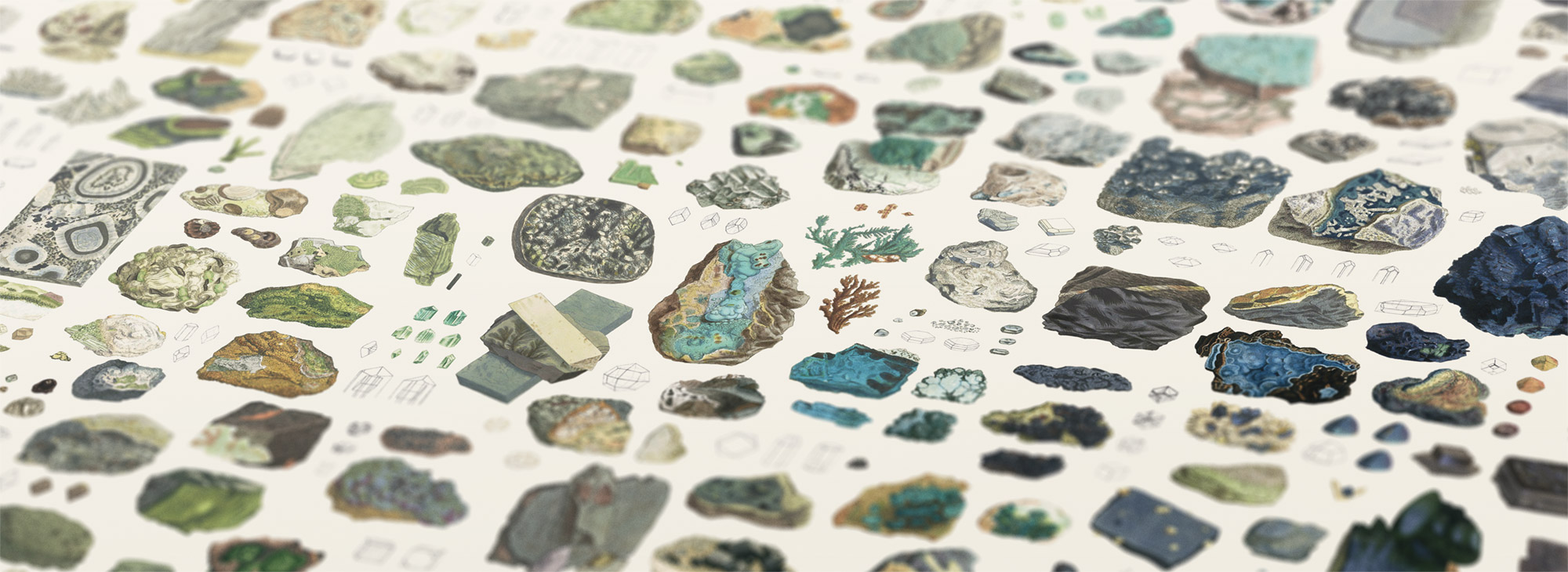 Enlarge
Enlarge
British Mineralogy
Fibrous Carbonate of Lime
- Div. 2. Imitative.
This substance has been long known; but, I believe, has not been noticed in any publication, if we except Dr. Kidd’s Outlines of Mineralogy. I have a piece in my possession which is reported to have belonged to Da Costa, who was said to be at a loss what to call it, I have also received it from different friends at various periods; which shows it to be sufficiently remarkable to attract notice, and that it would appear a desideratum if passed over in this Work. It was probably first noticed at Bath, or in the quarries in that neighbourhood; but is also found in most Limestone quarries, varying much, accordingly as the stratum in which it is found is more or less compact. I gathered the upper specimen at Shotover Hill, where it is not uncommon; but these were rather remarkable, as the fibres were mostly so very loose as to resemble in texture some rotten wood, which has lost the transverse fibres, and become petrified. It separates into extremely fine filaments, which, after separating, break so nearly, if not quite, transversely, as not to show in the least the rhomboidal fracture (a character peculiar to it and the Satin Spar). The middle figure shows the varieties of its colour, from nearly white to the usual brown; and was sent from near Bath. The lower figure is taken from a specimen found at Mitford, with which I was favoured by Thomas Meade, Esq.*
It is remarkable for the bending of its filaments, and not less so for the holes apparently formed by the Mytitus tunicatus, (which I find abounds in variety of petrified Corals, found between Oxford and Bristol,—see tab. 323.) There are also cases of Serpulæ about it. This proves that the structure of the substance preceded that of the Mytilus, and that it may have been coeval with the Corals, or even of earlier formation. It is sometimes dull and opaque, sometimes almost transparent, and nearly as shining as Satin Spar†.
- * I beg to correct a mistake in this gentleman’s name;—it should always be read as above, not Charles, end should have the terminal e.
- * I must here remind my readers, that the habitat I have given for Satin-Spar, tab. 5, p. 11, is correct; for some other authors have, by mistake, and by copying from each other, named Derbyshire for its habitat, and this seems to have originated with Jameson, who probably purchased some specimens there, and where, not long since, has been found striated Gypsum or Sulphate of Lime, so compact as much to resemble the Satin-Spar, and like it has been cut for ear-rings, necklaces, &c. The farmer may be readily distinguished from the latter by being easily scratched, by the finger-nail.

